From
Mail Art to Panscan:
February
1991 Notes On Teleconferencing
By Mark Bloch
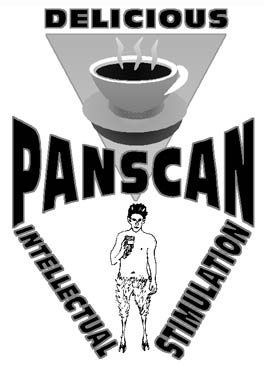 Albert Einstein once
said that he didn't know what World War Three would be fought with, but that
“World War Four will be fought with sticks and stones.” Well, unless we somehow
end up going back to smoke signals and beating drums for communication, it
seems to me that computer connections are here to stay, at least for the time
being. If the current advancements in technology (and commerce) continue, then
surely, soon everywhere on the planet where we now see telephones and
televisions, computers and modems will be commonplace.
Albert Einstein once
said that he didn't know what World War Three would be fought with, but that
“World War Four will be fought with sticks and stones.” Well, unless we somehow
end up going back to smoke signals and beating drums for communication, it
seems to me that computer connections are here to stay, at least for the time
being. If the current advancements in technology (and commerce) continue, then
surely, soon everywhere on the planet where we now see telephones and
televisions, computers and modems will be commonplace.
Charming but archaic
systems like the international mail system will cease to exist. It may be sad.
After all, there will be no more mailmen coming to your door clad in shorts
with a little hat on their heads, avoiding the family dog and carrying sacks of
letters for perusal. No more hand addressed letters from Mom or your relatives
back home. No perfumed love letters, no cookies at Christmas time from Grandma.
Needless to say, mail art would also bite the dust. No more absurd
ersatz-bureaucratic rubberstamps, hand colored postcards, or bits of paper
tumbling unexpectedly into your coffee from hard to open envelopes. The tactile
aspect of mail may be gone until computer technology learns to re create that
important and most personal aspect. But meanwhile entire new communication
systems will usurp that old system, replacing the "outmoded" modes of
communication with new solutions to old problems- and in ways we can't yet
imagine. As far as I can tell, it's going to be damned exciting.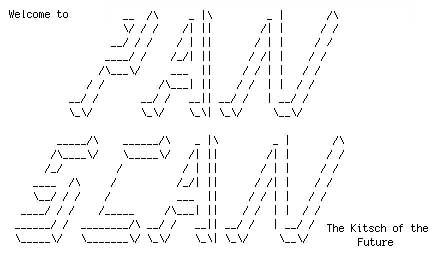
Teleconferencing is now laying the groundwork for that new system. In fact, this is not a futuristic idea but one that is already operative. At the moment, and perhaps for a while (maybe forever for parts of the globe) the problem is that not everyone is hooked into it or even aware of it. But for those that are, new paths are being cut through the phone lines by creative types who have no interest in the business purposes the system was undoubtedly designed for.
Basically Teleconferencing is a text-based system that divides interactions into “conferences” by category. Within each of those conferences, the system allows users to reply to a discussion topic called an “item” created by a conference organizer. These replies then appear as chronologically based list that other users can read and respond to.
So where does Teleconferencing overlap with mail art? There are several systems being developed right now. One that would allow visual imagery as well as text to be sent is called “Naplips.” There are others but the moment we are capable of sending text and for me, its certainly just as exciting and rewarding as mail art.
Sound may also figure
into the equation. Perhaps the tactile element of mail will disappear, but it
could be replaced by a new dimension: sound. Already on The Well, there is an item called “beep beep” that allows
participants to create a tone in their messages with a particular keystroke.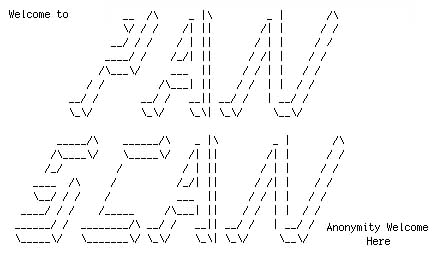 When others read the message, that keystroke takes the form of a tone that is
actually emitted by the computer. In the future it will undoubtedly be possible
for more complex sounds to travel over the phone wires.
When others read the message, that keystroke takes the form of a tone that is
actually emitted by the computer. In the future it will undoubtedly be possible
for more complex sounds to travel over the phone wires.
A January 1, 1991 article in The New York Times said, "The 'gigabit network' would make it possible to transmit computer data and video images among the nation's supercomputer centers, research centers and universities as well as to businesses and homes." A "network of fiber optic cables" to replace the old copper wire "information infrastructure" failed in Congress this fall. To install a new net into every home and business in the country might "ultimately cost $200 billion." "For example a high speed digital network could make the materials stored in the nation's best libraries instantly available to readers in thousands of community libraries around the country" " A home television viewer could choose to view what (s)he wanted by selecting from a library of thousands of possible choices." "holding conferences by video" "Both in Europe and Japan large efforts are underway to modernize older telecommunications networks to permit them to carry high speed computer communications."
Panscan is an experiment that I have begun to lay the
groundwork for the coming revolution in telecommunications. Panscan is one of many conferences on Echo, a New York based system that currently has dozens
of participants. Other conferences include Culture, Psychology Telecom,
Computers, Science, Virtual Reality.
Virtually anything that humans talk about currently can be found in the form of
an ongoing discussion on Echo. I
even participated in an ongoing Group Therapy session with a fixed group of 6 people led by a
psychologist none of us had ever met in person. The possibilities are amazing
and each day brings new manifestations of possibilities. One thing that was not
being discussed, however, was mail art and the revolution in international
communication and do-it-yourself publishing that it has wrought. So I began Panscan in an attempt to fuse the spirit of mail art with
the immediacy of modem communications.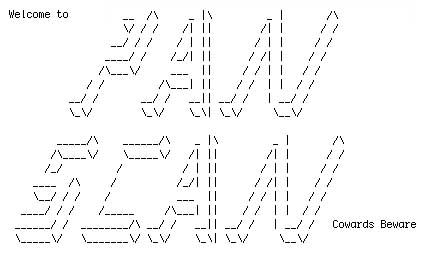
Panscan is known as a conference and as such it is on the same level of the Echo "hierarchy" as the other conferences I mentioned above such as Culture and Psychology. Once one enters Panscan (or any other conference), they are confronted with a list of Items. These items comprise the subjects under discussion on Panscan. At any one time not all the items are active. Conferencing has its own dance, just as mail activity does, where items rise and fall without warning. A recent item on the National Endowment For the Arts and Censorship, for instance logged hundreds of responses in days then cooled off and in the end more or less died. There was nothing left to say, the issue had been hashed out fervently on both sides, perhaps some people who had not so firm opinions were swayed, others ended up preaching to the converted. Nevertheless, the process was fascinating and stimulating to say the least. The saving grace in that particular item was that artists were prevented to coming to blows over their phone lines. This peace by distance is shared by mail art. To contrast, another item called Childhood Memories continues to exist with additions made more sporadically. Not a hotbed of activity but the postings that people make are poignant and often invite short flurries of responses by the other participants who empathize, compare notes or simply share their own memories triggered by the new activity in the item.
Mail art continues to
exist, however and that’s why I have maintained a listing item where
international shows are posted. Recently a couple of shows involving the fax
machine were listed there and received some responses from Echo 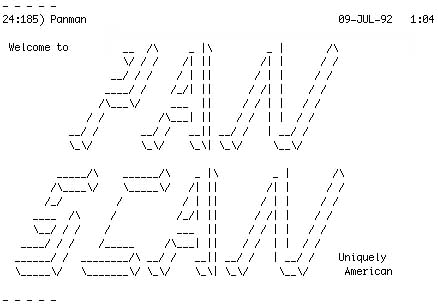 participants.
One direction teleconferencing might take would be like a combination of
today's teleconferencing and the fax machine. Visual information could be
digitized and sent over the phone line. It is possible now, surely it will
become more commonplace in the future.
participants.
One direction teleconferencing might take would be like a combination of
today's teleconferencing and the fax machine. Visual information could be
digitized and sent over the phone line. It is possible now, surely it will
become more commonplace in the future.
So what are the similarities between mail and Teleconferencing? Distance is the biggy. Telecom and mail art share the characteristic of connecting people over long distances. This distance is shortened by the speed of the communication in telecom, but this is balanced by the fact that at the present, costs are perhaps greater. Right now, of the people on Echo, only a handful live outside of New York. On the other hand, on The Well in California a more established system, most of the users live outside the San Francisco area where the system is based. I have sent out hundreds of cards announcing Panscan and only a handful have called to experience it. Those that have only did so once. Like mail art, it is the everyday or once weekly participation that makes it special. The fact that so few mail artists have had the means to stick around and really dialogue in Panscan on mail art has forced the conference to grow in ways I did not expect, however. The organizer of the entire Echo system now describes it as a "performance in progress." I'd have to agree.
There are several other
teleconferencing systems. Most notable is The Well. Remember- teleconferencing implies a two way
communication NOT in real time. On the other hand, BBS's (Bulletin board
services) are a similar situation but they do not allow for the conversational
aspects. It is more a listing kind of situation where 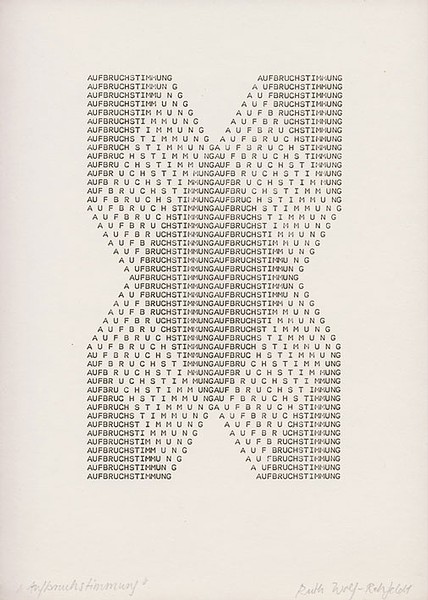 others can read what you
wrote and not necessarily respond directly. However there have been some
creative uses of the BBS format by and for artists including The Dada Board by Bill Paulouskas and the well-known RATOS by Charles Francoise in Belgium. Ruud Jannsen in
Holland runs the TAM bulletin
Board. In the realm of Teleconferencing, the ARTCOM system on The Well is on the cutting edge of teleconferencing.
others can read what you
wrote and not necessarily respond directly. However there have been some
creative uses of the BBS format by and for artists including The Dada Board by Bill Paulouskas and the well-known RATOS by Charles Francoise in Belgium. Ruud Jannsen in
Holland runs the TAM bulletin
Board. In the realm of Teleconferencing, the ARTCOM system on The Well is on the cutting edge of teleconferencing.
As far as projects enacted on line, stories and poems have been written collectively. One-- Tales From Econia-- is a word story about an imaginary town where a fat man, reminiscent of Jarry's Ubu, fantacizes about taking over the local tv station. Poems have been collectively written, with various degrees of success. One of the ideas that worked the best occurred when someone proposed that rather than free form line shouting from the participants, that a specific form was used like a sonnet or rhyming couplets. That was determined to be too time consuming for teleconferencing's immediacy so a compromise was chosen where participants were asked to repeat a phrase in their postings to give coherency to the overall result.
A dozen or so people created a finished poem in about 5 days. Can you imagine trying to do this in the mail art network? It might take years if it were completed at all. The differences in mail art are such that while stuff gets lost in the mail or stuck in someone’s archive, in teleconferencing, if no one wants to answer the item, the item is soon forgotten. Only the new responses since the last time someone was on the system show up. Thus, if no one posted in a particular item since my last response, I see nothing. In this way items die. But, like mail art a new influx of participants is constantly coming through the system, revitalizing dead items and bringing new viewpoints to stale conversations.
Teleconferencing has along way to go before it can appear in everyone's home and becomes as vital as the mail system. But just as mail art is not practiced by everyone who has a mailbox, creative use of the phone lines will not be for everyone who has a computer and modem. However, those that do choose to participate in a way outside the norm have it a little easier than in mail. The mail brings with it hundreds of years of history to fall into and/or rebel against whereas teleconferencing is a new medium altogether, It’s not quite like writing and it's not quite like talking- in fact it is a hybrid of the two. Artists are a valuable addition to the world of teleconferencing- previously populated only by techies and nerds. Artists lend new ways of using the system. The addition of visual information, instead of simply literary communication will be a huge difference. Even now in a Panscan item called ASCII Art, people create pictures that are created with letters, much the way Ruth Wolf-Rehfeldt of East Germany in the past made "visual poetry" drawings with her typewriter. Someone like Ruth would find teleconferencing invaluable for her communications. She would undoubtedly find an audience of artists and non-artists alike anxious to see her latest creations.
As I said, Panscan is an experiment that I have begun to lay the groundwork for the coming revolution in telecommunications. I hope you will eventually find your way there.
In 1991, I wrote down these ideas to be included in Chuck Welch’s Networking Currents book . He chose not to include them, so I offer this text now in this primitive early incarnation as “Notes” to show what I was thinking then: some four years before the death of Ray Johnson and also four years before the World Wide Web came along and the number of artists online began to increase. --Mark Bloch